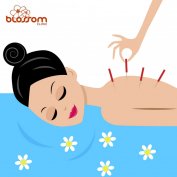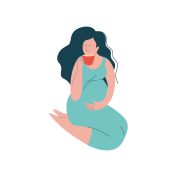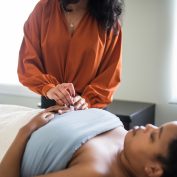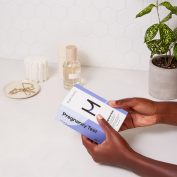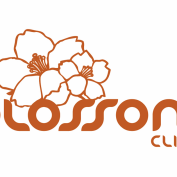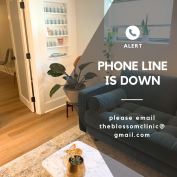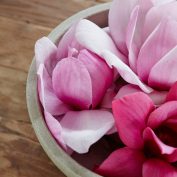Well, it happened again. Olympic swimmers adorned with purple and red circular marks across their muscular physiques dove into Olympic pools and the term ‘cupping’ splashed across our news feed. The first time this happened was in the 2016 Olympics and was most notably showcased by the gold medalist Michael Phelps. This time around cupping may feel like old news, especially in light of the strange new world we live in today, but it’s even older than you think. The earliest records date back to ancient Egypt around 1500 BC with translations of hieroglyphics detailing the use of cupping in the treatment of pain, fever, and menstrual disorders (1). Today it has been most often associated with East Asian Medicine where it is only one modality within a complete system of medicine. Given the ancient roots of this modality, why would modern athletes actively seek bruising before the biggest competitive moment of their lives? The answer to this depends on the lens through which we are looking.
How Does Cupping Work?
From a biomedical lens, the mechanism of action is still unknown. That’s a bit of a letdown but don’t worry there are at least 5 main theories as to why it can be therapeutic. One of the most interesting theories involves angiogenesis triggered by hypoxia (2). Angiogenesis is defined as the development of new blood vessels and hypoxia is defined as oxygen deficiency. Creating a partial vacuum via cupping stretches and separates layers of the skin, fascia, muscles, tendons, and organs. The mechanical stimulation and negative pneumatic pressure cause temporary hypoxia and through a complex series of physiological responses triggers angiogenesis (2).
Let this sink in a little…by temporarily depriving the tissues of a full supply of oxygen our body’s response is to make more blood vessels! This seems like superhero physiology that belongs to the likes of Wolverine and Wonder Woman but we all have this ability.
This also echoes another fad being discussed this year at the Olympics with the use of Blood Flow Restriction bands (BFR) that creates a similar hypoxic environment but with many key differences than cupping but let’s just leave that topic for another day. The point is, the benefits of cupping are the result of comprehensive effects of multiple types of stimulation exerted onto the body (2).
The practice from an East Asian Perspective
From an East Asian Medical perspective, cupping is all about restoring proper blood and Qi (pronounced Chee) circulation. Blood and Qi circulation can be impaired by a myriad of things but one of them is most notably blood stagnation. This is a common term in East Asian Medicine and although it sounds scary it is not to be confused with blood clots from a biomedical perspective. Blood stagnation can occur locally leading to stabbing, fixed, or boring pain; or it can be diffuse and systemic leading to a range of chronic conditions (2).
There are many causes for blood stagnation, in fact, almost everything can cause blood stagnation as it is a product of one’s individual constitution combined with environmental factors and unique health history. For example, let’s think about our friend Wonder Woman again. In order to save the world from everything, she subjects her body to intense physical training and epic battles which inevitably will cause injury. Any physical injury has the potential to create chronic blood stagnation if it is not properly treated or is very serious or if we are deficient.
Even emotional pain and upset have the potential to create blood stagnation as our emotions from an East Asian Medical perspective can affect the circulation of our blood and Qi.
Addressing blood stagnation with cupping therapy improves overall blood circulation which in turn improves Qi circulation and has many local and systemic health benefits such as reducing local inflammation, promoting the healing process, and reducing or eliminating pain (3).
Does it Hurt?
Ok, so now we know Wonder Woman could probably use some cupping and we have a pretty good idea as to why elite athletes use this medicine as part of their training regimen (more blood vessels please) but does it hurt? Although the marks left by cupping can look intense and are technically caused by ruptured capillaries, it is not painful. Cupping therapy is practiced by over 25,000 medically board-certified licensed acupuncturists and thousands of massage therapists across the nation and is safe, effective and not painful when performed by a properly trained practitioner (3).
The discoloration left by cupping can also be diagnostic for East Asian Medical practitioners. An intense red cupping mark signifies excess internal heat, whereas purplish-red discoloration may imply damp-heat and bluish-purple cupping marks indicate cold-dampness.
Blood stagnation is associated with cupping marks that are an intense dark color whereas light red discoloration is most frequently seen in patients with healthy blood circulation (4). As with any system of medicine, it is difficult to diagnose oneself so if you are curious about cupping and want to know what the marks say about your unique state of health, seek out your local Acupuncturist and see for yourself how it can make you feel like a superhero or olympian or at least just make you feel better in your body.
- Park DYK. History of Cupping. In: Park YK, ed. Modern and Ancient Cupping Therapy. 1st ed. Young Ki Park; 2021:45-50.
- Park DYK. Ancient and Modern Theories of Cupping. In: Park YK, ed. Modern and Ancient Cupping Therapy. 1st ed. Dr. Park Cupping; 2021:18-35.
- Reddy B. The Science of Cupping. NCCAOM. https://www.nccaom.org/science-of-cupping/. Published 2016. Accessed July 28, 2021.
- Park DYK. Cupping Marks and Explanations. In: Park YK, ed. Modern and Ancient Cupping Therapy. 1st ed. Dr. Park Cupping; 2021:86-87.
 You can schedule cupping sessions with Dr. Renee Shankar of Blossom Clinic. She is in the office Tuesdays and Fridays. Her schedule can be found on Mindbody online.
You can schedule cupping sessions with Dr. Renee Shankar of Blossom Clinic. She is in the office Tuesdays and Fridays. Her schedule can be found on Mindbody online.

